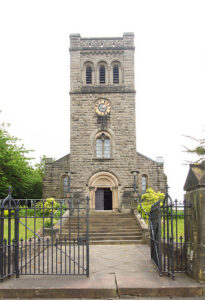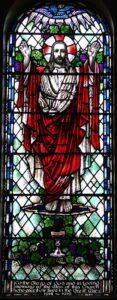Origins
 St John the Baptist’s Church, Ashbourne opened on 28th May 1871. The church was built at a cost of about £8,000 paid for Francis Wright, Esq. of Osmaston. Francis Wright, a deeply religious wealthy man owned the Butterly Iron and Coal works, which supplied steel to build London’s St Pancras Station. Originally the church was styled “Ashborne Free Church of England”.
St John the Baptist’s Church, Ashbourne opened on 28th May 1871. The church was built at a cost of about £8,000 paid for Francis Wright, Esq. of Osmaston. Francis Wright, a deeply religious wealthy man owned the Butterly Iron and Coal works, which supplied steel to build London’s St Pancras Station. Originally the church was styled “Ashborne Free Church of England”.
St John’s emerged out of a conflict that raged in the period 1850 to 1870, between Francis Wright and the vicar of St Oswald’s Church the Reverend Errington. At that time, St Oswald’s was the principal Anglican Church in Ashbourne. Wright objected to the practice in St Oswald’s of pews reserved for exclusive use by wealthy individuals and families who paid sums of money to the church for this privilege. Unable to accept this practice, Wright commissioned the building of St John’s with church pews provided to worshipers free of charge.
Soon after Wright’s death in 1873, the Church ran into financial difficulties and in 1883 it joined the established church. It is now part of the ministry of the incumbent of St Oswald’s.
 St John’s is a Grade II* listed building constructed of coursed pitched faced local sandstone from Mayfield. It is designed in the Romanesque revival style. It is a building consisting of an apsidal chapel, nave, aisles, and a western tower, forming the entrance, and containing a clock and one bell. It has a semi-circular headed window and door openings. Francis Wright’s background with Butterley steel works perhaps explains the dozen reliable cast iron pillars set in the aisles of the church interior.
St John’s is a Grade II* listed building constructed of coursed pitched faced local sandstone from Mayfield. It is designed in the Romanesque revival style. It is a building consisting of an apsidal chapel, nave, aisles, and a western tower, forming the entrance, and containing a clock and one bell. It has a semi-circular headed window and door openings. Francis Wright’s background with Butterley steel works perhaps explains the dozen reliable cast iron pillars set in the aisles of the church interior.
Over the doorway entrance to the church, are carved the words from Mathew 18:20: “Where two or three are gathered together in my name, there I am in the midst of them”. The east window, is a stained glass WW1 memorial depicting the Christ figure at whose feet is the following inscription: “ To the Glory of God and in Loving memory of the men of this church who gave their lives in the Great War 1914-1919.” The window is a fine example of the work of AJ Davies a distinguished member of the Bromsgrove Guild.